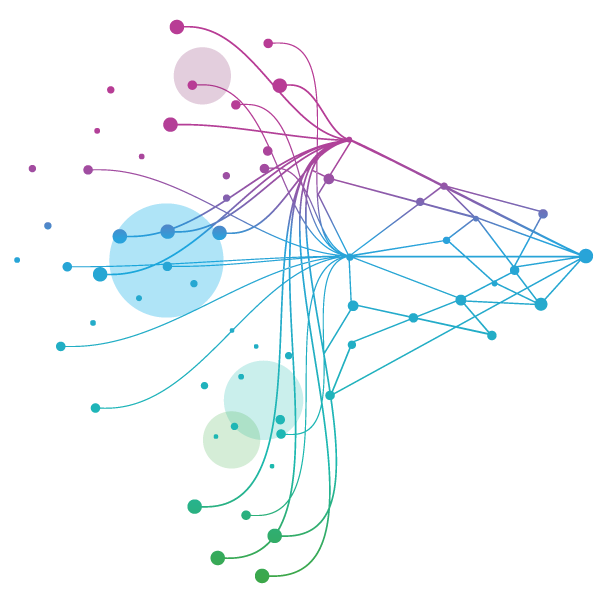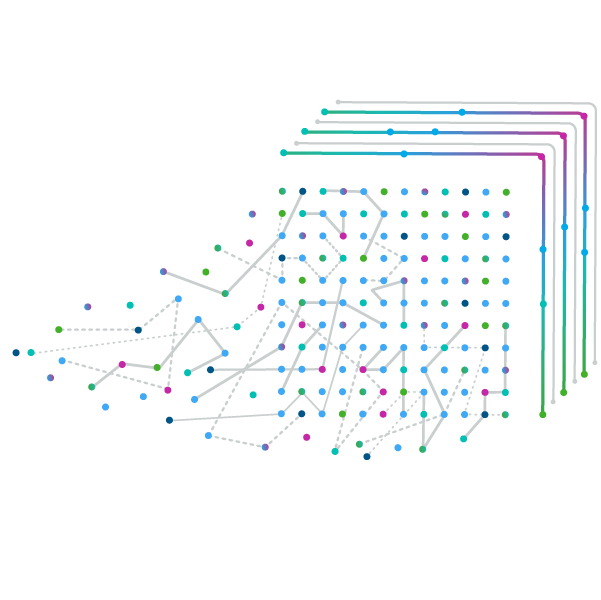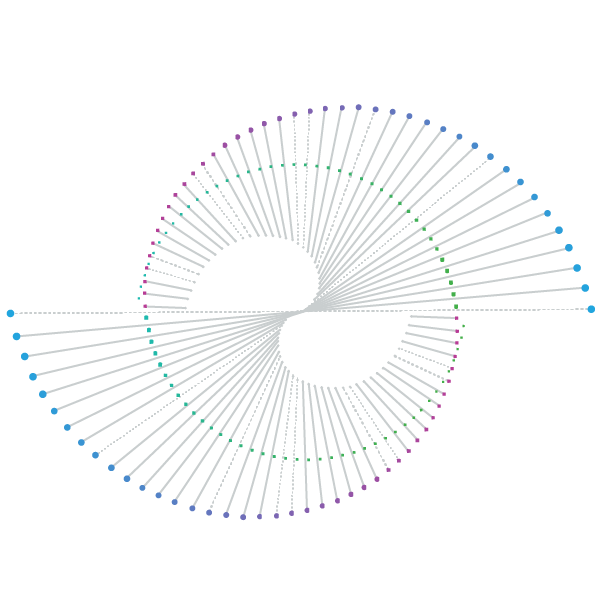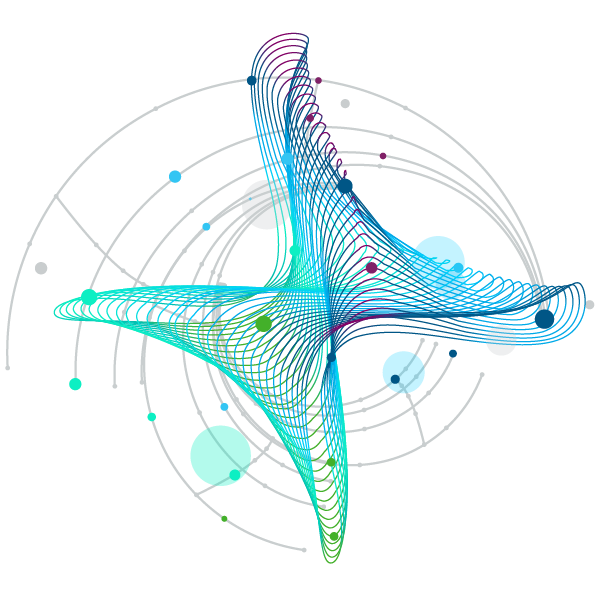Learn how unparalleled data, domain expertise, and technologies enable AI-powered solutions that are purpose-built for healthcare.
IQVIA has long been a leader in applying data and AI to transform healthcare. Today, we’re introducing IQVIA Medical Reasoning (Med-R1 8B), our most advanced large language model designed specifically for medical reasoning—a foundational process in healthcare and life sciences underpinning how practitioners assess and evaluate complex medical and scientific information to make informed, critically constructed decisions.
While experts always need to be in the driver’s seat, AI can assist them in closing the gap of medical knowledge, increasing efficiency and enhancing delivery of quality care. Med-R1 8B quickly interprets complex real-world data such as clinical notes and scientific literature and provides medically reasoned insights that are easy to understand, enabling experts to make better decisions. Med-R1 8B achieves accuracy levels typically seen only in models 2-5 times its size—making it one of the most efficient and deployable medical domain reasoning AI systems available today.
Our goal was clear: to build a model purposefully designed for healthcare. Med-R1 8B is small enough to deploy, fast enough to scale, and powerful enough to provide users with interpretable reasoning. More than just intelligent, Med-R1 8B is built to empower healthcare and life science organizations, enhance decision-making, and ultimately transform patient outcomes.
Smaller, Smarter, Ready to Scale
Med-R1 8B was rigorously tested on industry recognised medical domain benchmarks, including MedQA, PubMedQA, and MedMCQA. Med-R1 8B not only outperforms all published models in the 8 billion parameter family, but it also has accuracy equivalent to models 3-5 times larger and even surpasses GPT4, which is a closed model with 1.7 trillion parameters (i.e. more than 200x its size) on datasets such as PubMedQA.
What sets Med-R1 8B apart is not just its accuracy, but its dramatically reduced cost and infrastructure requirements. While 30B+ models demand extensive compute resources, higher latency, and more complex deployment setups, Med-R1 8B can be trained and served at a fraction of the cost—making it highly scalable for real-world clinical and enterprise applications.
This leap in efficiency is powered by our reinforcement learning architecture, ontology-enhanced LLM stack, and precision domain tuning—proving that intelligent design can rival brute-force scale, offering performance without the prohibitive costs.
Below are the results from the best comparable models on the Open Medical-LLM benchmark — a standardized set of datasets designed to evaluate the clinical reasoning and QA performance of LLMs across diverse medical domains.
| Dataset | DeepSeek-R1-Distill-Llama-8B | Llama-3.1-8B-Instruct | JSL-MedLlama-3-8B-v2.0 | Med-R1 8B |
|---|---|---|---|---|
| MedMCQA | 48.72% | 58.57% | 61.30% | 63.28% |
| MedQA | 55.70% | 62.77% | 62.06% | 73.29% |
| MMLU Anatomy | 59.26% | 71.85% | 71.85% | 72.59% |
| MMLU Clinical Knowledge | 70.19% | 73.96% | 78.11% | 78.49% |
| MMLU College Biology | 74.31% | 83.33% | 82.64% | 88.19% |
| MMLU College Medicine | 68.21% | 64.16% | 71.10% | 72.83% |
| MMLU Medical Genetics | 72.00% | 81.00% | 84.00% | 87.00% |
| MMLU Professional Medicine | 67.65% | 81.62% | 79.41% | 84.93% |
| PubMedQA | 72.80% | 75.40% | 74.20% | 76.40% |
| Average | 65.00% | 72.00% | 73.00% | 77.44% |
Table 1: Med-R1 8B achieves highest accuracy across the board. Accuracy is the number of correct answers out of the total number of questions.
These results position Med-R1 8B as the best-in-class model in the 8B parameter category, offering superior efficiency-to-performance ratio for healthcare applications.
While other models rely on scale, Med-R1 8B relies on precision—fine-tuned for scientific discovery, decision support, and explainable insights. This focused training strategy allows Med-R1 8B to generalize more effectively with less data—capturing both clinical knowledge and the structured reasoning processes required for real-world decision support.
Key advantages include:
- Transparent Decision Chains: Med-R1 8B explains its thought process step-by-step, making it easier for clinicians to interpret, validate, or challenge AI-driven recommendations (see image below).
- Evaluation of Alternatives: Rather than defaulting to a single “best” answer, the model weighs multiple diagnoses or treatment paths before offering conclusions.
- Uncertainty Awareness: Med-R1 8B flags ambiguity, expresses confidence levels, and identifies what information is missing—mirroring how clinicians reason under uncertainty.
- Ease of deployment and cost efficiency: The model’s compact footprint makes it ideal for enterprise-scale use, without the cost, complexity, or infrastructure demands of larger LLMs. It’s easy to integrate, fine-tune, and run securely within clinical environments.
By aligning its reasoning with real-world medical workflows, Med-R1 8B becomes a true partner in decision making—not just a source of answers.
Examples of the Model’s Step-by-Step Reasoning Process on a Complex Cases
Clinical decision making
The example below demonstrates how Med-R1 8B approaches a complex diagnostic scenario with the same structured methodology used by expert medical clinicians.
User: “In the attached clinical note, what is missing from this patient's differential diagnosis? ”
Med-R1 8B:

Drug target identification
The example below demonstrates how Med-R1 8B approaches a complex therapeutic comparison in severe eosinophilic asthma with the same structured methodology used by a discovery clinician.
User: “Does blockade of TSLP offer greater clinical benefit in severe eosinophilic asthma compared to IL-5 antagonists?”
Med-R1 8B:

The above outputs illustrate several defining strengths of the model’s reasoning capabilities:
- Structured Clinical Workflow: The model begins with a clear articulation of the clinical scenario—whether diagnostic or therapeutic—and then applies a step-by-step methodology to explore hypotheses, compare options, and synthesize evidence in a manner consistent with expert clinical reasoning.
- Evidence-Based Evaluation: The model critically assesses each diagnosis—identifying supporting findings (e.g. sputum culture, dyspnea, risk factors) or comparing therapeutic targets (e.g. TSLP vs. IL-5 blockade) and eliminating less likely options through careful consideration of pathophysiology, presentation, and contraindications. The model integrates information from published clinical trials, biological mechanisms, and patient-specific factors. It weighs each option using evidence-based reasoning and established guidelines.
- Transparent Reasoning Process: Rather than offering a conclusion outright, the model explicitly walks through its thought process. The model outlines assumptions, interprets study findings, considers subgroup nuances, and explains why one path may be favoured over another. This clarity makes its output traceable and verifiable.
- Focus on Clinical Plausibility: The model demonstrates the ability to reason through uncertainty—accounting for comorbidities, varying eosinophil levels, incomplete data, or heterogeneity in therapeutic response. It captures the nuance of clinical decisions beyond textbook scenarios.
- Support for Decision-Making, Not Just Answer Retrieval: The model’s value lies in its ability to explain, not just respond. It provides clinicians with structured insights that can be scrutinized, discussed, and validated in collaborative environments—enhancing confidence, mitigating risk, and enabling more personalized care.
This structured approach mirrors how experienced clinicians approach complex cases. By iteratively synthesizing findings, applying diagnostic frameworks, and transparently narrowing down possibilities. When embedded into clinical workflows, Med-R1 8B has the potential to help augment clinician decision making, improve diagnostic confidence, and support more consistent, evidence-aligned care delivery.
Looking ahead: Powering Agentic Workflows Across Healthcare and Life Sciences
Med-R1 8B is laying the foundation for agentic AI systems that can reason, plan, and act with a certain degree of autonomy across clinical and scientific domains. From structuring complex decisions to orchestrating tool use, the model mirrors how expert humans think, making it ideal for integration into intelligent workflows.
Planning is central to agentic intelligence, and Med-R1 8B demonstrates this by breaking down high-level goals into logical, evidence-based steps. Its transparent reasoning and adaptability make it a natural orchestrator, whether comparing therapies, interpreting trial data, or guiding diagnostics.
Speed and affordability matter. A fast, low-latency system enables real-time iteration and broader adoption, turning AI from a point solution into a dynamic, system-wide partner.
As we move forward, both Med-R1 8B and its future iterations will provide not just answers, but the architecture for truly intelligent, explainable, and scalable agentic workflows across healthcare and life sciences.
Contact us at AppliedAIScienceInfo@IQVIA.com for more information and to discuss how Med-R1 8B can help you achieve greater efficiency and precision in product development and patient care.


























